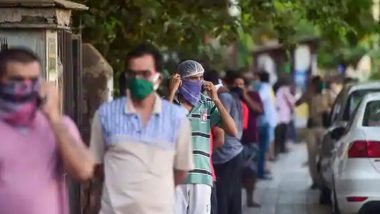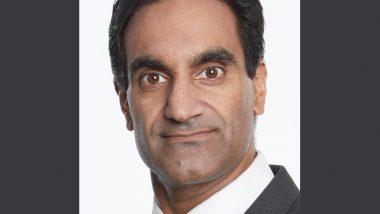Seoul, October 12: It is analysed that the number of people belonging to the high-income group has decreased and the middle class has increased since COVID-19. In the case of worker households, both high-income and low-income households decreased and the middle class increased, while in the case of self-employed people, both high-income and middle-income households decreased and the low-income households increased by 65,000, showing serious damage.
As per the statistics on Korea's Household Income Status Survey microdata quarterly report by the Korea Economic Research Institute (KERI), there was no change in the proportion of low-income households in overall households, however, the proportion of high-income households decreased by 1.4 per cent and the proportion of middle-income households increased by 1.4 per cent.
In the second quarter of 2019, before COVID-19, the overall proportion of the high-income class was 9.9 per cent, the middle-income class was 57.6 per cent and the low-income class was 32.5 per cent. The overall income distribution has been slightly improved with 8.5 per cent of the high-income class, 59.0 per cent of the middle-income class, and 32.5 per cent of the low-income class in the second quarter of 2021, after COVID-19. India Reports 14,313 New COVID-19 Cases, 181 Deaths in Past 24 Hours; Lowest in 224 Days.
However, since COVID-19, the proportion of both high-income and middle-income classes of self-employed people has decreased, and only the low-income class has increased.
In the second quarter of 2019, before COVID-19, the proportion of self-employed households was 13.1 per cent of the high-income class, 61.0 per cent of the middle-income class, and 25.9 per cent of the low-income class.
However, it has changed to 11.8 per cent of the high-income class, 59.8 per cent of the middle-income class, and 28.4 per cent of the low-income class as of the second quarter of 2021, after COVID-19.
The proportion of high-income and middle-income households decreased by 47,588 (1.3 per cent) and 74,091 million (1.2 per cent), respectively, while the proportion of low-income households increased by 64,577 households (2.5 per cent).
The KERI said, "This result is based on the data up to the second quarter of this year. Considering the impact of the fourth wave of COVID-19 since July, the situation of self-employed people is likely to have worsened."
As the proportion of high-income and low-income households decreased and the middle class increased, the income distribution of regular worker households has been improved.
In the case of regular worker households, the proportion of the high-income class was 11.4 per cent, the middle-income class was 67.7 per cent, and the low-income class was 20.9 per cent in the second quarter of 2019, before COVID-19.
However, as of the second quarter of 2021, after COVID-19, it has changed to 9.8 per cent of the high-income class, 70.4 per cent of the middle-income class, and 19.9 per cent of the low-income class. The proportion of both high-income and low-income classes decreased by 176,220 (1.6 per cent) and 79,999 (1.0 per cent) respectively, while the middle-income class increased by 447,526 (2.7 per cent). Covaxin COVID-19 Vaccine Recommended For Use For Kids Aged 2-18 Years by Expert Panel to DCGI.
The gap between low-income classes of self-employed and regular workers has also widened. In the second quarter of 2019, before COVID-19, the proportion of low-income class in self-employed households was 25.9 per cent, and the proportion of low-income class in regular worker households was 20.9 per cent, so the gap between self-employed and worker households was around 5.0 per cent.
However, in the second quarter of 2021, the proportion of low-income self-employed households was 28.4 per cent and the proportion of low-income worker households was 19.9 per cent. The gap between low-income classes of self-employed and regular workers was 8.5 per cent.
(This is an unedited and auto-generated story from Syndicated News feed, LatestLY Staff may not have modified or edited the content body)













 Quickly
Quickly




















